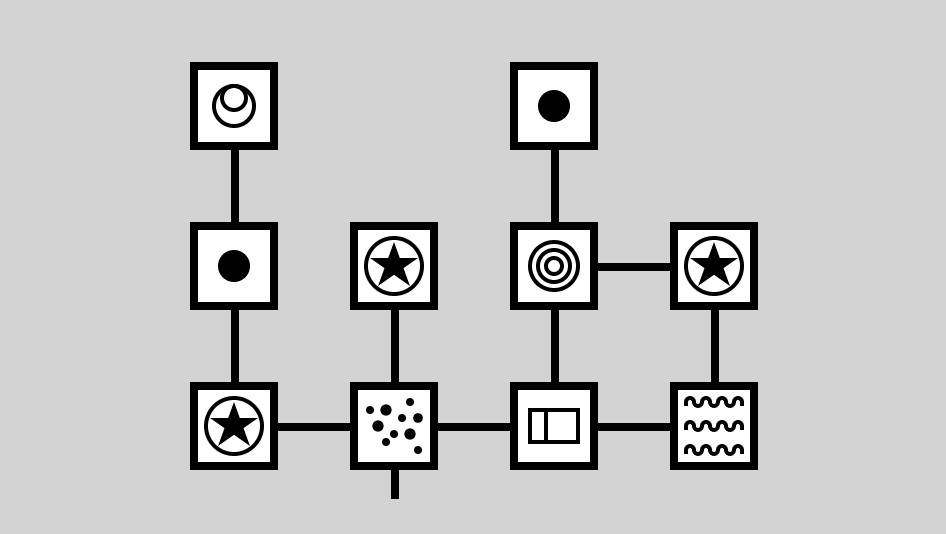One of my favorite kinds of dungeons is the one where the layout itself is a puzzle for the players to solve. This reshuffling dungeon looks straightforward at first, but repeats itself in unpredictable ways. Clearing the dungeon gives the illusion of forward progress, but doesn’t actually lead anywhere. Nonetheless, once the players realize this, they’ll have most of the tools they need to actually get to the end of the maze.

First, you draw up some rooms. Seven is a good number; many more or fewer and the math becomes obnoxious. Put some weird obstacles and NPCs in them. When running this for my group, I unabashedly stole my rooms from Satyr Press’ Maze of the Blue Medusa. Each room has four exits, one in each of the four cardinal directions. Assign each room a number. Don’t connect your rooms.
When the PCs enter the dungeon, they enter at room 1. If they leave room 1 the way they came in, they leave the dungeon. If they leave it via any of the other three exits, roll to randomly determine which room that hallway leads to. When they leave the new room, do the same. Once a room is placed, it’s fixed; retracing your steps leads you to the rooms you’ve already visited. Similarly, if you traveled north, then east, then south, then west, you’d wind up back in the room you started in, just as you’d expect.
However, rooms can exist in multiple places simultaneously. if you roll a room that’s already in play, you place it again. It’s the same room. The PCs inside it remember you. Dead monsters are still dead. Pits of fire that were crossed before must be crossed again. The exits in this new iteration of the room don’t lead to the same set of rooms as the exits in the first iteration, though. You’ll see the same rooms again, but the overall layout does not repeat.
How, then, do you reach the ‘end’ of this infinitely-recursive dungeon? Each room should contain a single word from a phrase the length of the number of rooms. For example, if your phrase is “Three fishers went sailing into the west,” room 1 would contain the word ‘three’, and room 7 would contain the word ‘west’. In some rooms, the phrase may be obvious, perhaps carved ostentatiously on a wall. In others, the phrase may be hidden, perhaps known only by the strange NPC who dwells there. (If the NPC is killed, is there some other way to learn the word?) In exploring the maze, the PCs will assemble the phrase. Speaking the phrase aloud opens a new exit that leads to the dungeon’s destination.
What would be a good destination? Anyone with some muscle and a bit of cleverness can access the destination, so it’s no good for a treasure vault. If this is a wing of a larger dungeon, it may be the home of something from elsewhere in the dungeon that chose to settle somewhere a bit more protected. If this is a standalone dungeon, the destination might be the laboratory of a powerful mage tired of being bothered by uninvited guests begging for help with their petty concerns. The dungeon makes sure that only those both capable and serious are able to get close enough to make their plea. At my table, this dungeon served as a trial by fire for the faithful of the local cult. The destination was their temple’s sanctum sanctorum.
Finally, some really pedantic advice on making a good exit phrase. Ideally, it’s thematically related to the dungeon’s purpose. It also shouldn’t have the same word in it twice. To keep the exact order of words unambiguous, the phrase shouldn’t have more than one adjective (they can go in any order), shouldn’t have any adverbs (they can go before or after the verb), and shouldn’t have any words that could be swapped and still have the sentence make sense (‘the dog bit the cat’ vs. ‘the cat bit the dog’). At my table, I used “The dreaming god awoke to enact revenge”.






